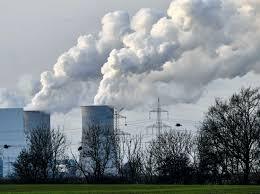Global GHG Emissions Will Actually Be Some 16% Higher In 2030 Than 2010
The release of its most recent report last month and should be a wake up call for world leaders

UN’s climate body has publish its latest assessment of the current state of national climate plans, ahead of the COP26 UN climate summit in Glasgow. These national climate plans (or NDCs – Nationally Determined Contributions) are where countries signal the actions they plan to take to address climate change. As we approach the Glasgow COP and a ‘global stocktake’ of climate targets, many countries have produced updated plans laying out how they will cut emissions.
In view of the postponement from 2020 to 2021 of the United Nations Climate Change Conference to be held in Glasgow and the impact of the COVID-19 pandemic on the preparation of NDCs, the secretariat informed Parties that it would publish the full version in advance of the pre-COP meeting, scheduled for 30 September to 2 October 2021.
The report synthesizes information from the 164 latest available NDCs, representing all 191 Parties to the Paris Agreement, including the 86 new or updated NDCs communicated by 113 Parties, recorded in the interim NDC registry as at 30 July 2021, covering 93.1 per cent of the total global emissions in 2019, which are estimated at 52.4 Gt CO2 equivalent (eq).
Accounting for 75% of global GHG, G20 nations are key. To date, Argentina, Canada, the European Union, United Kingdom and United States have strengthened their 2030 emission reduction targets – but only the UK’s is rated as close to 1.5C compliant, according to new analysis published this week by Climate Action Tracker.
China, India, Saudi Arabia and Turkey (who are collectively responsible for 33% of global greenhouse gases) have yet to submit updated NDCs. Australia and Indonesia have submitted updated NDCs with GHG emissions reduction targets identical to those they offered in 2015, according to an assessment released by Climate Analytics and WRI.
Brazil and Mexico submitted plans that would allow higher emissions compared to their previous targets. Russia went one step further, submitting a target that would actually allow higher emissions than its current “business-as-usual” trajectory. Japan and South Korea are expected to submit new, tougher targets pre COP26.
The projected total GHG emission level in 2025 is 58.6 per cent higher than in 1990 (34.6 Gt CO2 eq), 45.6 per cent higher than in 2000 (37.7 Gt CO2 eq), 27.6 per cent higher than in 2005 (43.0 Gt CO2 eq), 15.8 per cent higher than in 2010 (47.3 Gt CO2 eq), 7.7 per cent higher than in 2015 (50.9 Gt CO2 eq) and 4.5 per cent higher than in 2019 (52.4 Gt CO2 eq).
For 2030, the projected total GHG emission level is 59.3 per cent higher than in 1990, 46.2 per cent higher than in 2000, 28.1 per cent higher than in 2005, 16.3 per cent higher than in 2010, 8.2 per cent higher than in 2015 and 5.0 per cent higher than 2019.
But the latest available NDCs imply global GHG emissions will actually be some 16% higher in 2030 than 2010. For the group of 113 Parties with new or updated NDCs (86 NDCs + EU27), greenhouse gas emissions are projected to decrease by 12% in 2030 compared to 2010. Still, the world is falling well short of the level of ambition necessary to avoid the worst climate outcomes. Emissions are going in the entirely the wrong direction.
This report comes after the IPCC issued a “code red” for humanity on the release of its most recent report last month and should be a wake up call for leaders.
Views expressed here are those of Dr. Seema Javed, a known Environmentalist, Journalist and Communications Expert




